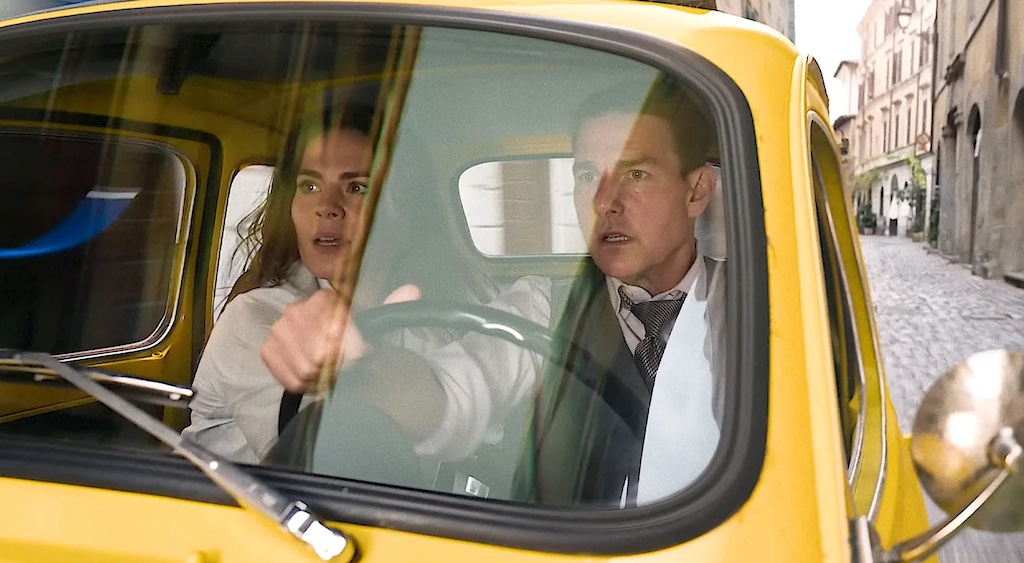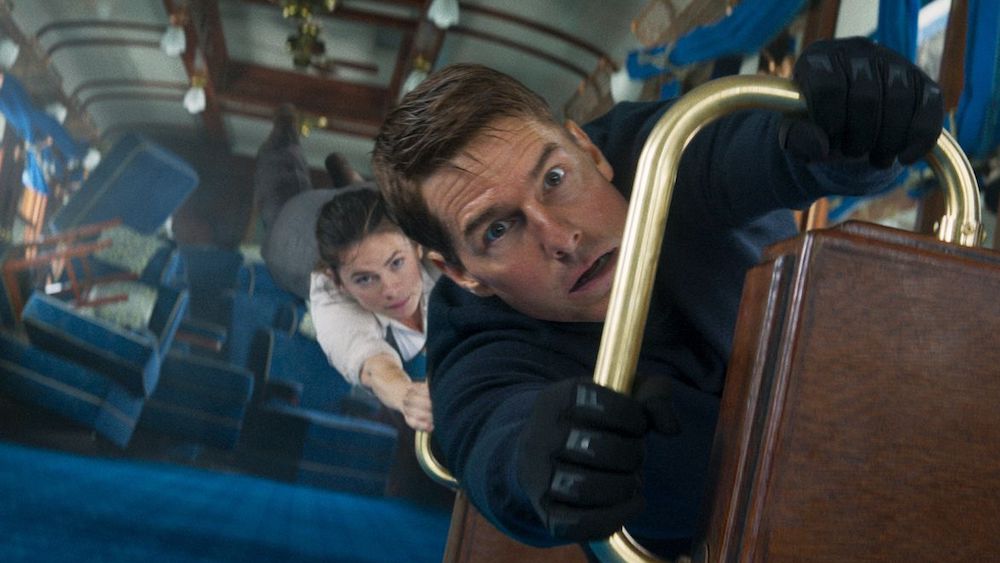
Extending one of the most successful franchises in movie history, Mission: Impossible Dead Reckoning Part One follows secret agent Ethan Hunt on a quest to save the world from an AI program known as The Entity.
Tom Cruise is back as Hunt, accompanied by series regulars Ving Rhames, Simon Pegg, Rebecca Ferguson, and Vanessa Kirby. New to the franchise: supervillain Esai Morales and his deadly cohort Pom Klementieff.
Dead Reckoning unfolds on a massive scale, with scenes shot in Rome, Venice, Abu Dhabi, Tangier, Austria, and Norway, as well as various studios in the UK. COVID disrupted the project, complicating logistics for director Christopher McQuarrie and his production designer Gary Freeman.
This is the first Mission: Impossible credit for Freeman, who worked previously on films like Allied and Tomb Raider. He spoke with Below the Line by phone from England, where he is hard at work on Dead Reckoning Part Two.
Below the Line: Give us a sense of the scale of this project. When and where did your work start?
Gary Freeman: I started on this back in the autumn of 2019. They’d already scouted several countries. I was concentrating on the Italian locations. Venice and Rome would be tentpole sequences for the movie. We were also in Ukraine. I believe President Zelensky reached out to Tom at some point, but the situation there obviously changed.
Travel, distant locations — they’re the heartbeat of these movies. We’re in Venice in autumn, 2019, and it felt like everything was simmering. Veneto was kind of the epicenter of European COVID, but nobody really understood it yet. We decided to move to Rome, but COVID was spreading like wildfire. We were about to head out to Abu Dhabi when the whole world imploded.
Tom and Chris wanted to keep the momentum going, so we continued to work. I planned the desert build and the train sequences and had endless Zoom meetings with Chris McQuarrie.
I think we were one of the first movies to have boots back on the ground when we restarted in Venice.
Below the Line: How important is it to do practical stunts instead of using visual effects? How does it affect your work as well?
Freeman: It’s all about the energy and the performance. We all know you can shoot in a CGI volume, and these artisans with amazing digital skills can pretty much do anything.
But with practical stunts you can see subtleties in performances. Take the Orient Express sequences. We shot that for real in Norway. We’re not on a green screen stage, we’re on real rolling stock going through an amazing countryside. The quality of light is different. You see light going through a cloud, you see the nuances of the performances. You’re immersed in the action.
To help get that, we built rubber tops for the railroad carriages so Tom and Esai could get decent grips for their stunts. We built lower roof sections so we could travel on real tracks in a real environment. The visual effects team could work with real imagery rather than digitally generating backgrounds.
Below the Line: What about the interior scenes in the rail cars? What did it take to be able to move them the way you did?
Freeman: That was all done on huge rigs. [Special effects supervisor] Neil Corbould and his team built these amazing rigs that could tip up and spin and drop. Huge gimbal rigs that were shot on the back lot. I can’t remember how many we had because there were so many manifestations of the cars. Obviously, we had stage versions for the dialogue scenes. They were built as sets with flyable or wild walls. We placed them on gimbals that could rock and roll.
Then for the stunt sequences we had metal versions, basically steel boxes that were built onto gimbal rigs depending on whether they had to tilt or drop. The special effects team built the armature or structure for the cars. We’d tell them, “We need something sticking out here and something sticking out there.” You would want all those items welded or securely fixed or boxed to the structure.
When Tom and Hayley are dropping through the carriage and landing on those partitions between the sofas or couches? Those were structurally built and then clad in some sort of hard material, a GRP or hard foam, which we painted to look like wood.

Below the Line: What about that piano in the car? Was that an effect?
Freeman: Oh no, that was a real piano that was dropped. Most movies would probably have done a CG version, but Chris wanted to drop a real piano. He wanted to see it drop away.
Below the Line: In the old days they would have used horizontal sets and just turned the cameras perpendicular to them, right?
Freeman: Absolutely. But then on a flip side, we referred a lot to The Train, the John Frankenheimer film where Burt Lancaster did his own stunts. That’s the film where they scuttled real trains. The power of that movie when you see real 70-, 80-, 100-ton steam locomotives smashing and crashing—you almost feel the weight of them. Or Buster Keaton’s The General. That’s the way Tom and Chris roll, they want to acknowledge those classic movies where they did it for real. That’s why the energy comes across. You as a viewer feel that it’s real.
It makes my life a nightmare because it’s so much easier to do it digitally on a green screen and have visual effects add texture. I don’t think that ever works. It doesn’t look as good.
Below the Line: What about the sequence in Rome where cars are crashing down the Spanish Steps? I noticed in the credits a “do not try this yourself” disclaimer.
Freeman: I don’t know if you’ve been to the Spanish Steps but they’re vast. The idea was to send our version of a military special forces armored truck probably weighing about five tons down them. Chris wanted it to be this sort of Terminator-style unstoppable machine that would break through walls and crash down.
Chris is not a previs kind of person because he doesn’t want to be boxed in, but that sequence was so specific that it was very heavily prevised. We always try to give Chris options to swing left or right, but we had to be a bit more surgical in that build. That was something we worked on during COVID. I had digital models we used to spin around, examine angles, to give Chris as much as we could within the parameters we had.
We split the sequence into three parts. Parts one and three we shot in Rome. So everything at the top of the stairs and everything at the bottom was all Rome.
We built the steps in between ourselves on the back lot. It was a hugely expensive build because of the detail and also the reinforcement for the armored truck. A lot of structural engineering to work out. We massaged it a bit, used smoke and mirrors to provide an overlap between the three pieces. Then visual effects came in and did their magic and just blended the worlds perfectly together.
Below the Line: Are you working on Part Two?
Freeman: I am. I’m at my desk going through the locations, trying to get a package together for our director. A lot on, but it’s all good. It’s all good.
Below the Line: Does Ethan Hunt save the world?
Freeman: I can’t say anything except that the next one’s going to be even bigger.
Mission: Impossible – Dead Reckoning Part One is now playing in theaters.





